
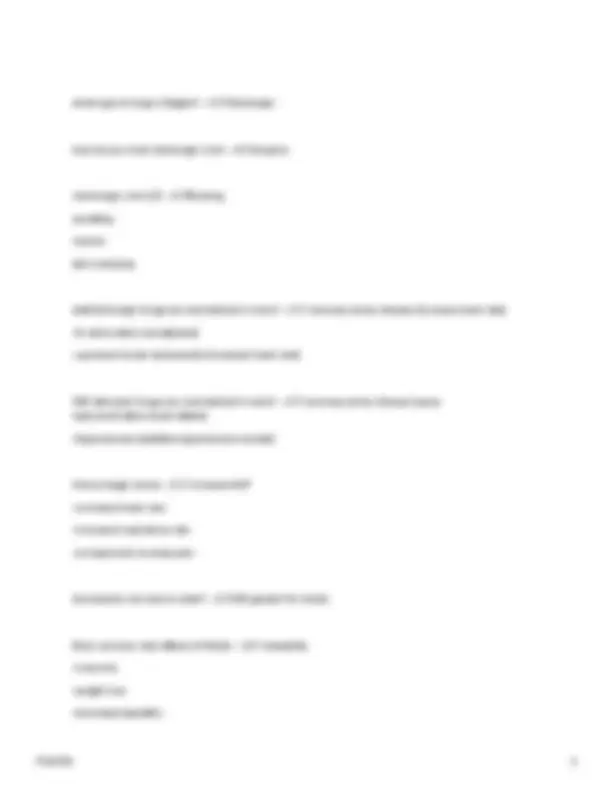
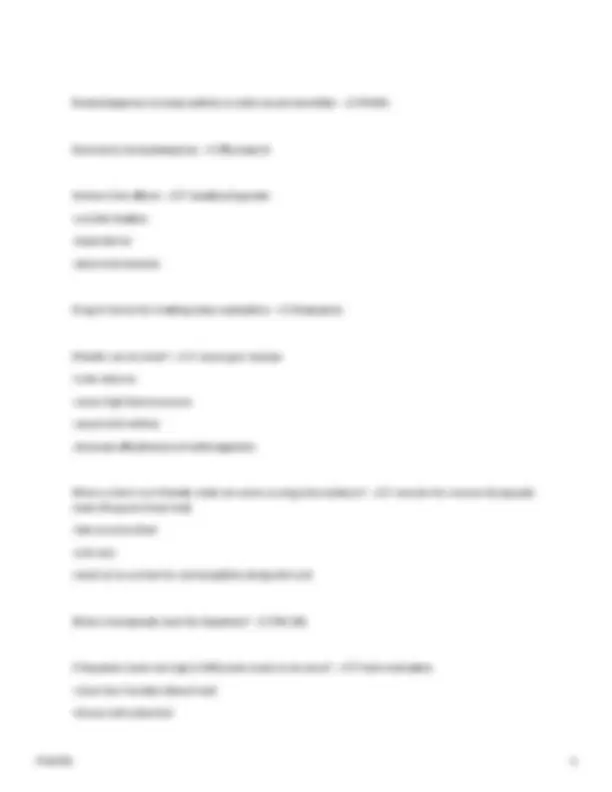
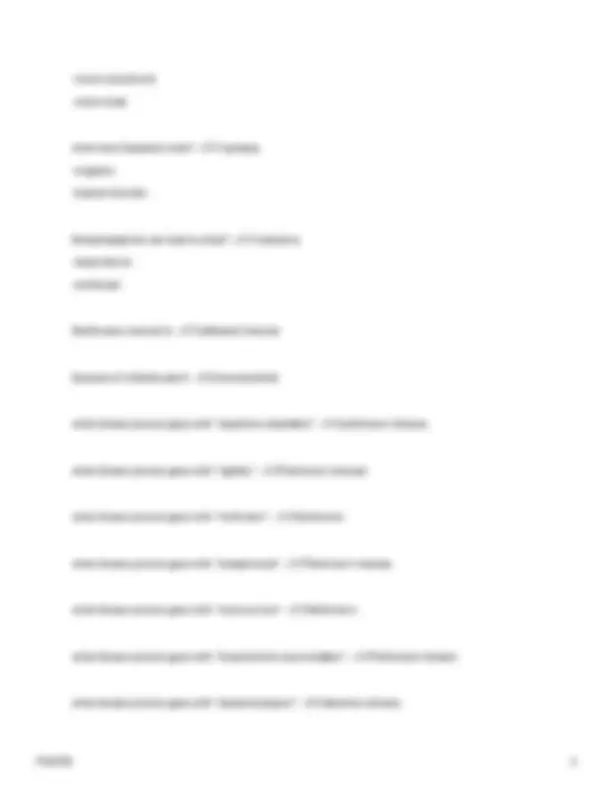
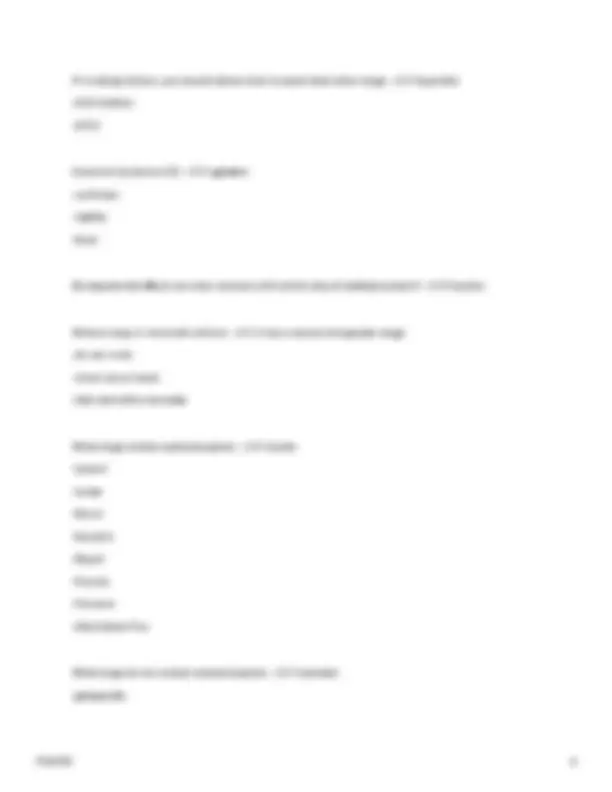
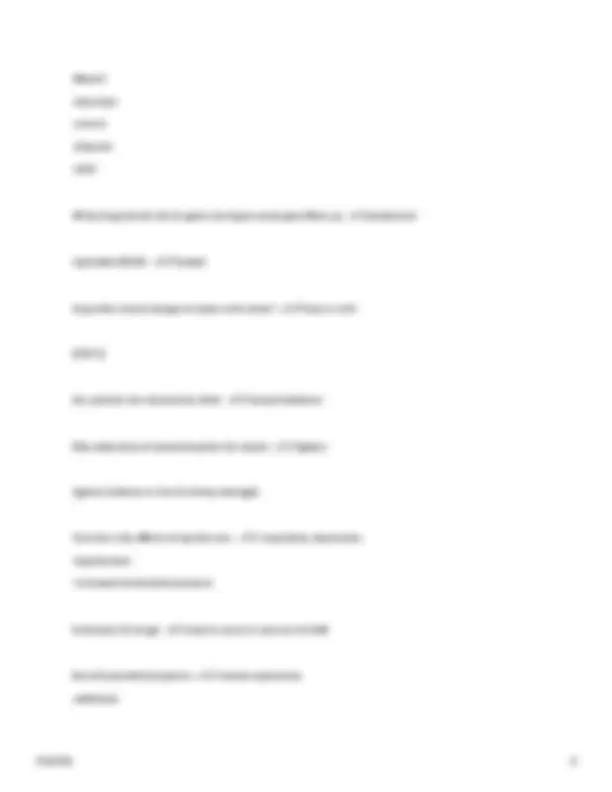
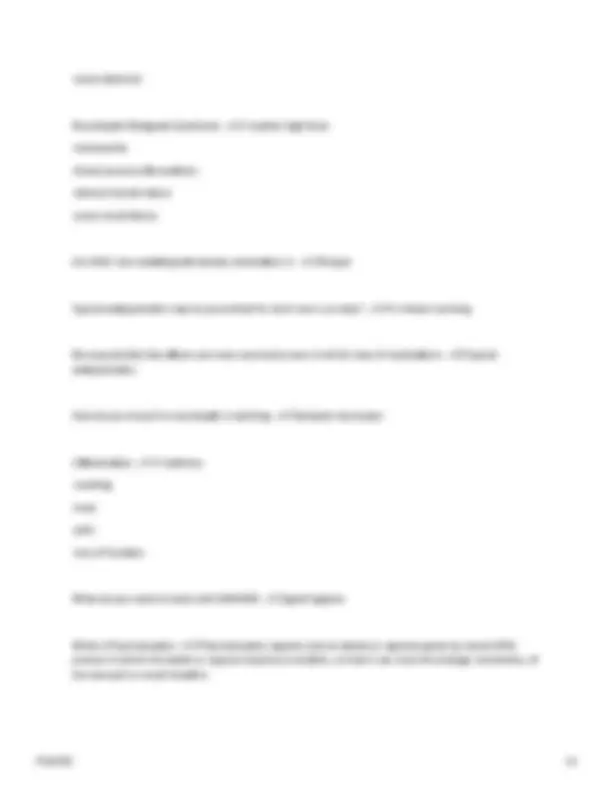
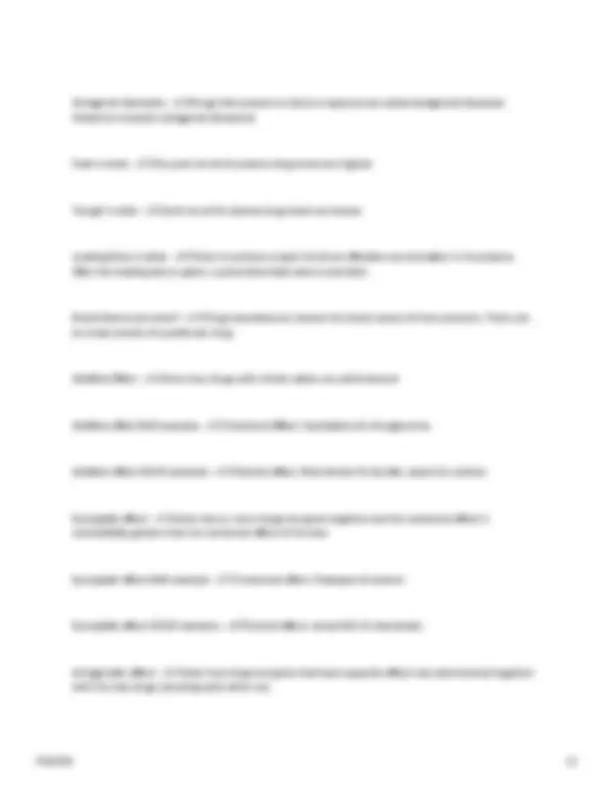
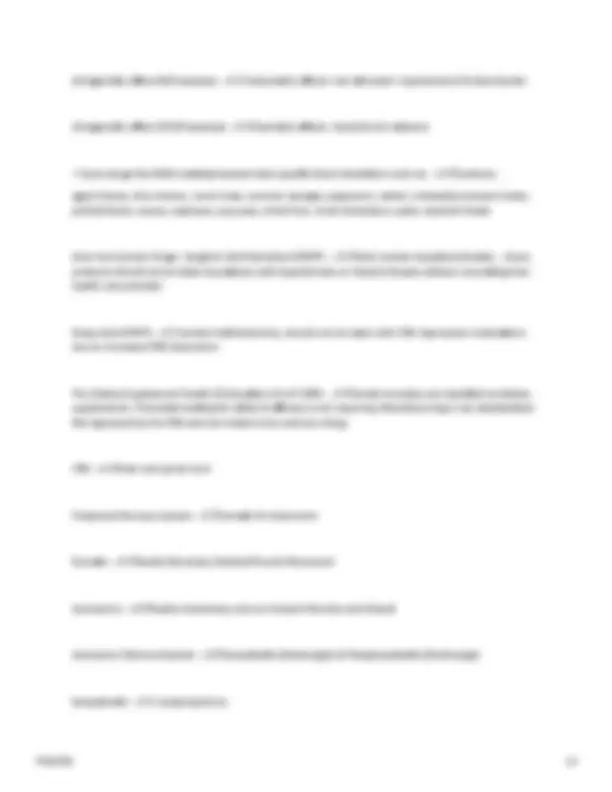
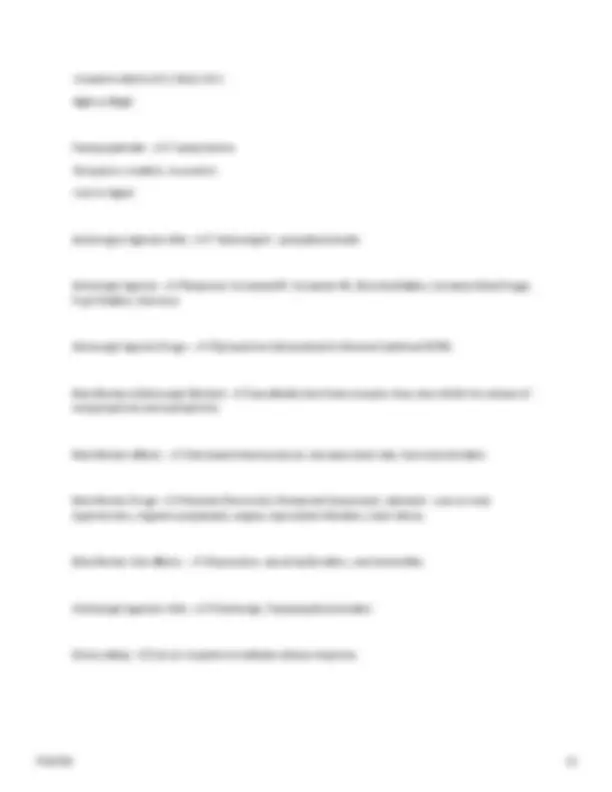

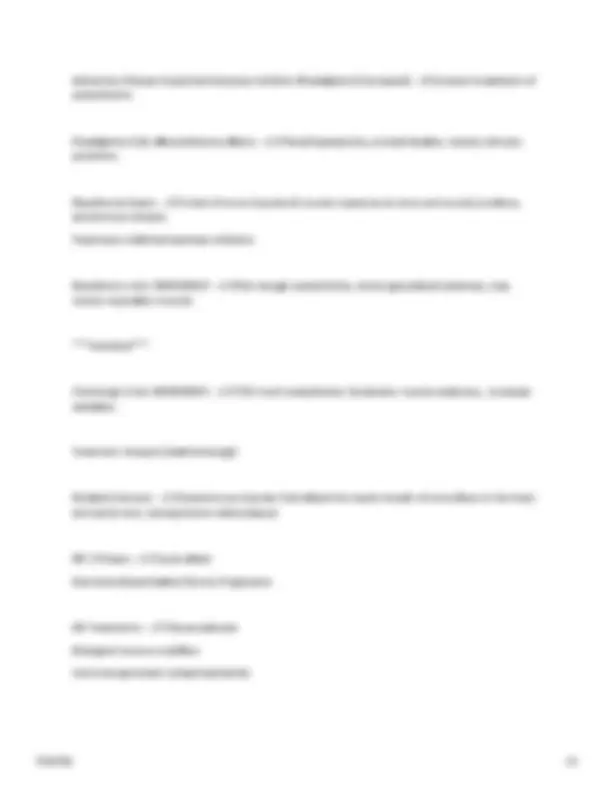
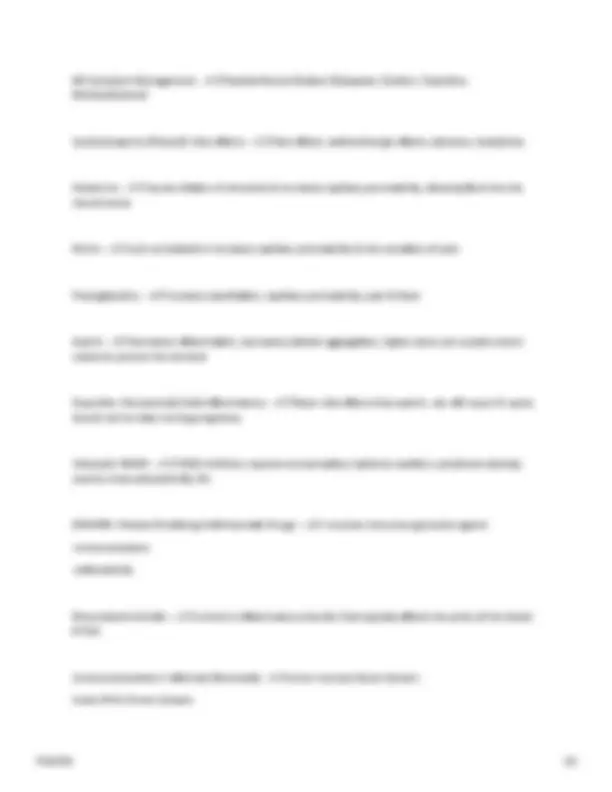
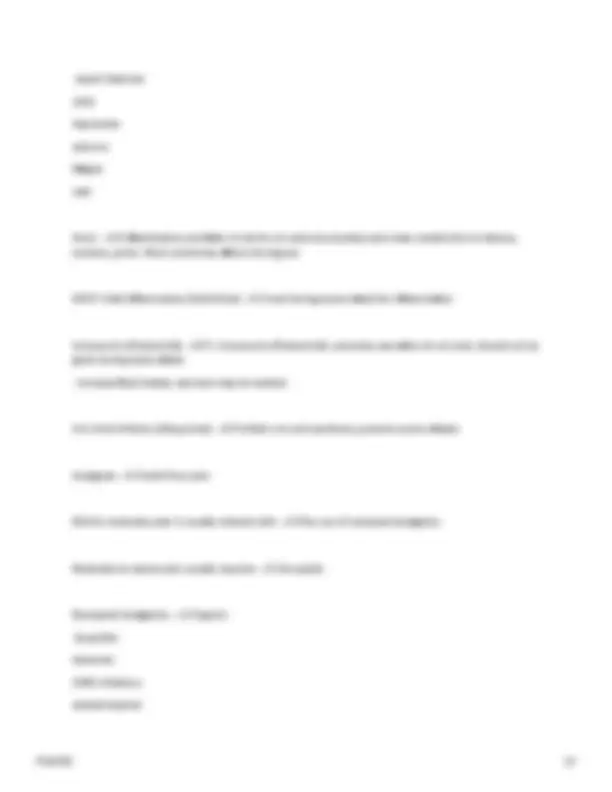
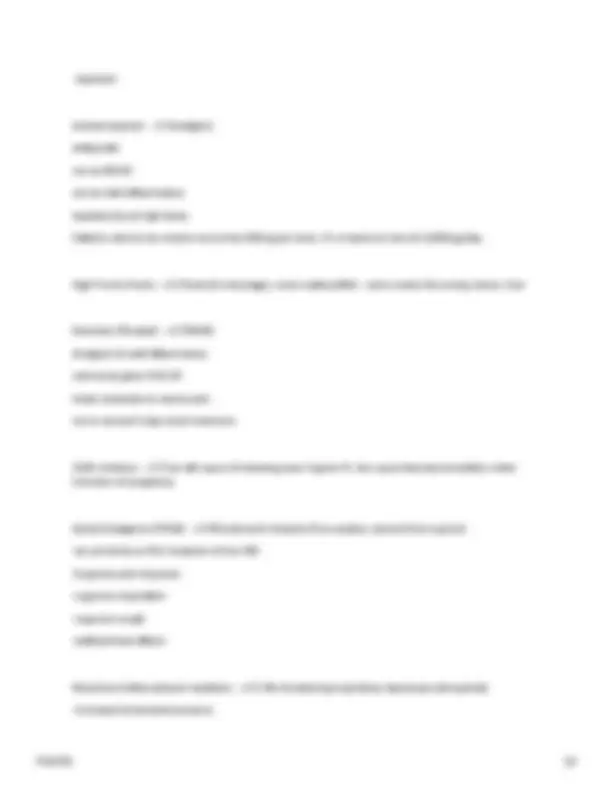
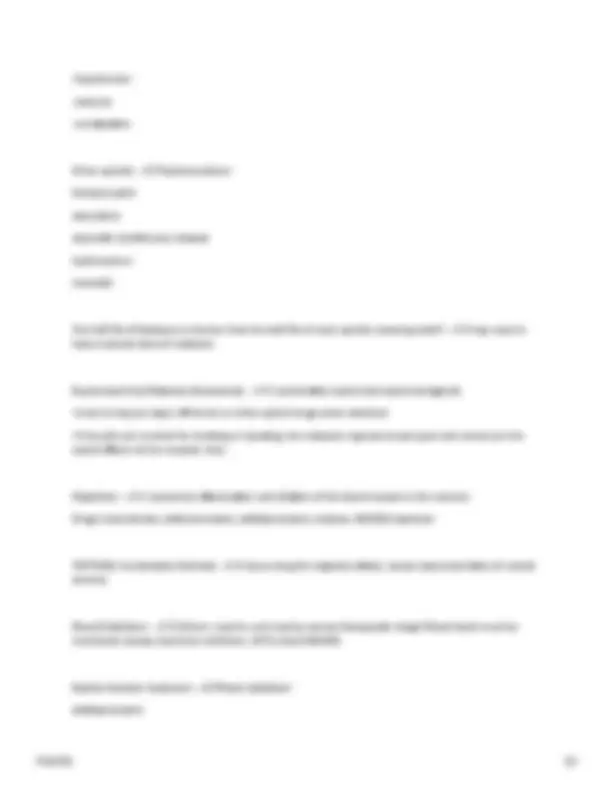
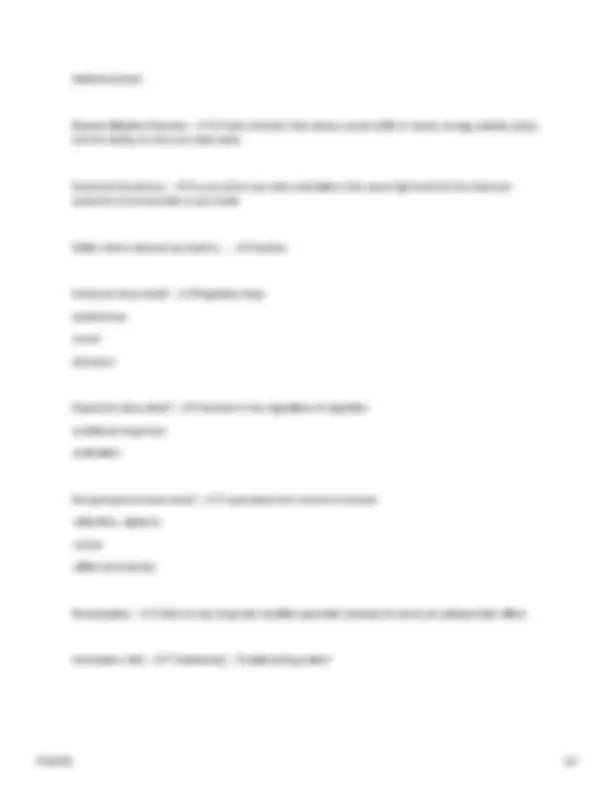
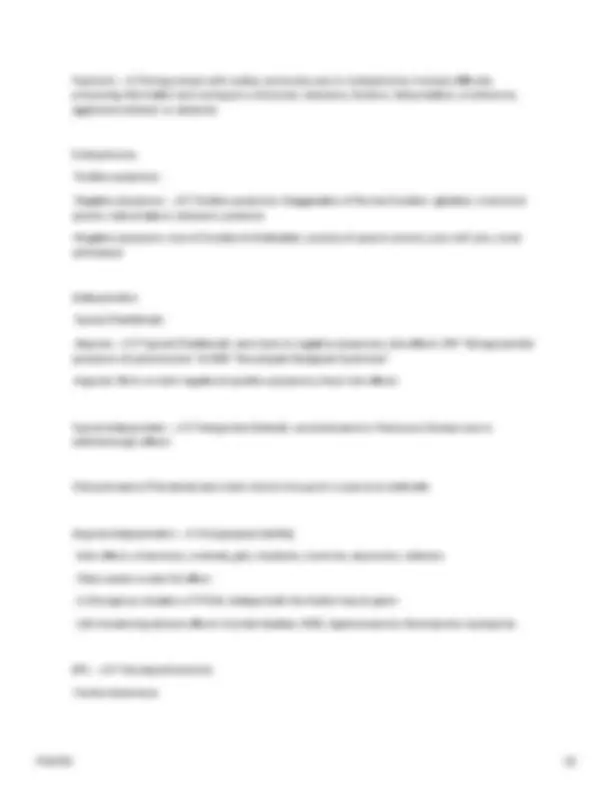
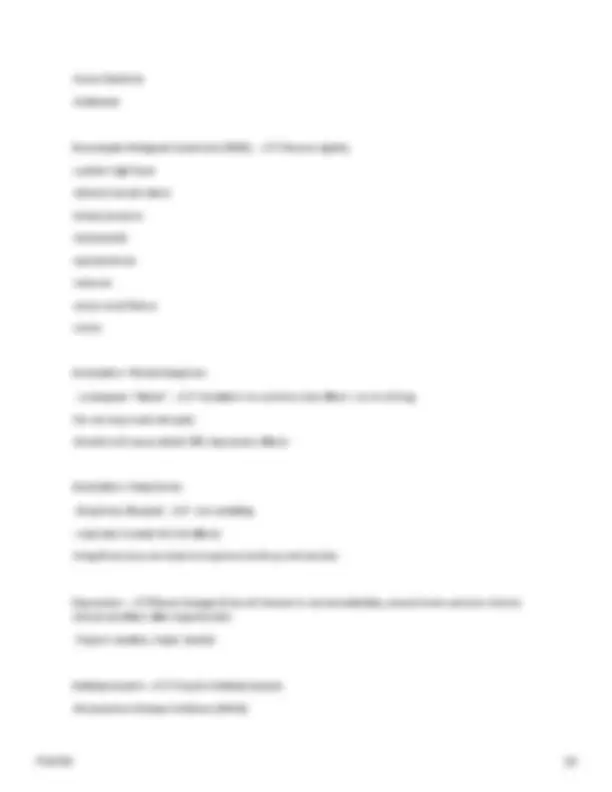
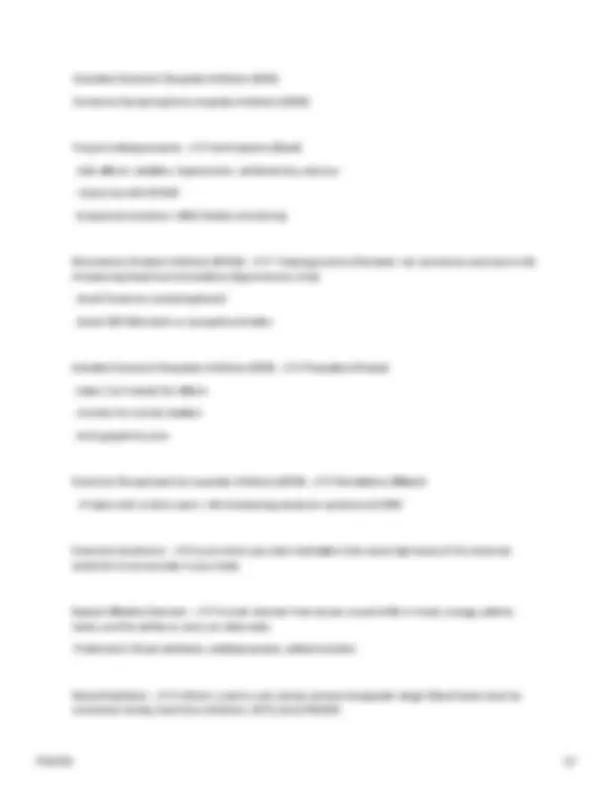


Study with the several resources on Docsity

Earn points by helping other students or get them with a premium plan


Prepare for your exams
Study with the several resources on Docsity

Earn points to download
Earn points by helping other students or get them with a premium plan
Community
Ask the community for help and clear up your study doubts
Discover the best universities in your country according to Docsity users
Free resources
Download our free guides on studying techniques, anxiety management strategies, and thesis advice from Docsity tutors
A review of pharmacology concepts: drug actions, therapeutic windows, half-life, and classifications. It covers drug types, mechanisms, side effects, and contraindications, focusing on clinical applications and nursing considerations. Presented in a Q&A format for exam prep and review. Includes information on drugs like reglan, dilantin, depakote, and lithium, with nursing interventions and adverse effects. Designed to reinforce pharmacology principles and drug-specific information for safe patient care. Also covers cholinergic/anticholinergic effects, CNS stimulants, benzodiazepines, barbiturates, and drugs for Parkinson's, Alzheimer's, and myasthenia gravis.
Typology: Exams
1 / 27

This page cannot be seen from the preview
Don't miss anything!




















Drugs that PRODUCE a response - ✔✔agonist Drug that PREVENT or block a response - ✔✔antagonist Therapeutic WINDOW is what? - ✔✔level of the drug between minimal effective concentration in the plasma for obtaining desired drug response and the minimal toxic concentration The time it takes for one half of the drug concentration to be eliminated from the body is called? - ✔✔half life what is a patient on two highly protein bound drugs at risk for? - ✔✔accumulation and toxicity a decreased responsiveness over the course of therapy, which may lead to the need to increase dosages to attain the same effect - ✔✔tolerance what is it called for drugs to share many common features - ✔✔classification or class what makes drugs fit into the same "Class" - ✔✔-related by chemical structure
Beta Blockers commonly seen in what clients? - ✔✔hypertension antagononist suffix - ✔✔LOL antagonist S/S - ✔✔decreased heart rate rest and digest bronchospasm agonist S/S - ✔✔increased heart rate fight or flight vasoconstriction increased blood sugar Before administering antagonist what do you check - ✔✔Heart rate Blood Pressure Cholinergic - ✔✔salivate lacrimation urinate deficate decreased weight Anticholinergic - ✔✔Cant see Cant pee Cant spit Cant poop increased heart rate
Benzodiazapines increase activity to what neurotransmitter - ✔✔GABA Reversal to benzodiazapines - ✔✔flumazenil Ambien Side effects - ✔✔-sedative/hypnotic
what disease process goes with "respiratory muscle weakness" - ✔✔myasthenia gravis what disease process goes with "anticholinestrase inhibitor drugs" - ✔✔myasthenia gravis what disease process goes with "immunosupressants" - ✔✔myasthenia gravis and multiple sclerosis what disease process goes with "anti-acetylcholine antibodies" - ✔✔myasthenia gravis what disease process goes with "brain lesions" - ✔✔multiple sclerosis what disease process goes with "diplopia" - ✔✔multiple sclerosis what disease process goes with "spactisity" - ✔✔multiple sclerosis what disease process goes with "myelin sheath damage" - ✔✔multiple sclerosis what disease process goes with "remission/exacerbation" - ✔✔multiple sclerosis what disease process goes with "spinal cord lesions" - ✔✔multiple sclerosis your patient is receiving tx for MG with Mestonin. What should you see if it is working? - ✔✔maintenance of muscle strength What to avoid when taking cyclobenzaprine (Flexeral) - ✔✔-driving
Pt is taking Lithium, you should advise them to avoid what other drugs - ✔✔-ibuprofen
Drugs generally disintegrate and are absorbed faster in what? - ✔✔very acidic fluids. Very Old and very young people have less gastric acidity so... What is the result? - ✔✔Lower/slower absorption > Drug in the system longer If a drug is enteric coated and meant to be absorbed in where? what would happen if you crushed it before taking it? - ✔✔Small intestine, Absorbed in stomach Pharmacokinetic Phase: - ✔✔this is the process of drug movement to achieve drug action. Sometimes referred to as what the body does to the drug. 4 processes: Absorption, Distribution, Metabolism (Biotransformation), Excretion (Elimination) Protein bound drugs are destroyed by? - ✔✔digestive enzymes Insulin is a protein bound drug, so CANNOT be given by which route? - ✔✔Oral Absorption- Drugs absorbed most easily are? - ✔✔Fat soluble and Non-Ionized First Pass effect is what? - ✔✔The liver can inactivate or change drugs into different forms. Bioavailability is what - ✔✔the percentage of the administered dose that reaches systemic circulation Bioavailability for IV administered drugs is what % - ✔✔100%, why? Direct bloodstream/vein contact After a pill is taken by mouth what organ has a major impact on its bioavailability - ✔✔Absorption- most oral drugs are absorbed through the action of mucosal villi in the small intestine. If the villi are damaged by disease or surgical intervention, the absorption of the drug is delayed or does not occur. High fat foods increase what? - ✔✔absorption time
Antagonist Examples - ✔✔Drugs that prevent or block a response are called antagonists Example: Histamine receptor antagonist (Atropine) Peak is what - ✔✔the point at which plasma drug levels are highest Trough is what - ✔✔point at which plasma drug levels are lowest. Loading Dose is what - ✔✔Given to achieve a rapid minimum effective concentration in the plasma. After the loading dose is given, a prescribed daily dose is provided. Brand Names are what? - ✔✔Drug manufactures choose the brand names of their products. There can be many brands of a particular drug. Additive Effect - ✔✔when two drugs with similar action are administered Additive effect BAD example - ✔✔Undesired Effect- Hydralazine & nitroglycerine Additive effect GOOD example - ✔✔Desired effect: Beta blocker & diuretic, aspirin & codeine Synergistic effect - ✔✔when two or more drugs are given together and the combined effect is substantially greater than the combined effect of the two. Synergistic effect BAD example - ✔✔Undesired effect- Diazepam & alcohol Synergistic effect GOOD example - ✔✔Desired effect- amoxicillin & clavulanate Antagonistic effect - ✔✔when two drugs are given that have opposite effects are administered together with the two drugs canceling each other out.
Antagonistic effect BAD example - ✔✔Undesirable effects- bet stimulant: isoproterenol & beta blocker Antagonistic effect GOOD example - ✔✔Desirable effects- morphine & naloxone
Indirect acting - ✔✔inhibit the action of the enzyme cholinesterase, permitting ach to persist and attach to the receptor Cholinergic Effects - ✔✔stimulates urination, increases salvation and tear production, increases GI peristalsis Cholinergic drugs: - ✔✔Bethanacol chloride (urecholine), Metoclopramide hcl (Reglan) Anticholinergics AKA - ✔✔"Cholinergic antagonists", parasympatholytics Anticholinergics Drugs: - ✔✔-Atropine- for bradycardia, reduces salivation, dilates pupils
Amphetamines Drug adverse reactions: - ✔✔tachycardia hypertension, palpitations, weight loss, hepatoxicity Amphetamine Drug Phentermine: - ✔✔CNS Stimulation Insomnia Treatments: - ✔✔non pharmalogic, antihistamines, sedative/hypnotics Insomnia Drugs: - ✔✔Zolpidem (Ambien) Insomnia Drugs Adverse Reactions: - ✔✔tolerance, dependence, hypotension, suicidal ideation Benzodiazepines do what? - ✔✔Increase the action of the inhibitory neurotransmitter gamma- aminobutyric acid (GABA) to the GABA receptors Benzodiazepines Drugs - ✔✔-Lorazepram (Ativan) treats anxiety, seizures
Alzhemiers Disease Acetylcholinesterase Inhibitor (Rivastigime & Donepezil) - ✔✔prevent breakdown of acetylcholine Rivastigmine Side effects/Adverse effects: - ✔✔Renal/hepatoxicity, suicidal ideation, stevens Johnson syndrome. Myasthenia Gravis: - ✔✔a lack of nerve impulses & muscle responses at nerve and muscle junctions; autoimmune disease. Treatment= Anticholinesterase inhibitors Myasthenic crisis: EMERGENCY - ✔✔Not enough acetylcholine, severe generalized weakness, may involve respiration muscles intubated Cholinergic Crisis: EMERGENCY - ✔✔TOO much acetylcholine. Symptoms: muscle weakness,, increased salivation. Treatment: Atropine (anticholinergic) Multiple Sclerosis: - ✔✔Autoimmune disorder that attacks the myelin sheath of nerve fibers in the brain and spinal cord, causing lesions called plaques MS 3 Phases: - ✔✔acute attack Remission/Exacerbation/Chronic Progressive MS Treatments: - ✔✔Glucocorticoids Biological immune modifiers immunosuppressant cyclophosphamide
MS Symptom Management: - ✔✔Skeletal Muscle Relaxer (Diazepam, Bclofen, Tizanidine, Methacarbamol) Cyclobenzaprine (Flexeril): Side effects: - ✔✔Side effects: anticholinergic effects, dizziness, headaches. Histamine: - ✔✔causes dilation of arterioles & increases capillary permeability, allowing fluid into the injured areas Kinins: - ✔✔such as bradykinin increases capillary permeability & the sensation of pain Prostaglandins: - ✔✔increase vasodilation, capillary permeability, pain & fever Aspirin - ✔✔decreases inflammation, decreases platelet aggregation, higher doses are usually enteric coated to protect the stomach Ibuprofen- Nonsteroidal Anti-inflammatory: - ✔✔fewer side effects than aspirin, can still cause GI upset, should not be taken during pregnancy Celecoxib: NSAID: - ✔✔COX2 Inhibitor; requires a prescription; (adverse reaction: peripheral edema); used to treat osteoarthritis, RA DMARDS: Disease Modifying Antirheumatic Drugs: - ✔✔-includes immunosuppressive agents